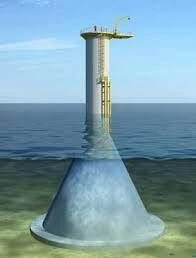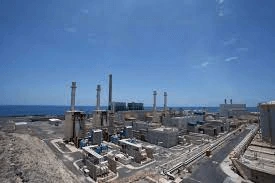“ Wind Energy’s Adverse Effects on Marine Life "
How much wind energy does Tenerife produce?
Due to big industries, agriculture, mass consumption of food and products, driving cars, and many other factors, emissions are being expelled into the air. Think of the greenhouse gasses; carbon dioxide, methane and ammonia, these emissions are leading to climate change. In order to meet the goal of the Paris Agreement, to not go over the 1.5 degrees temperature increase, there is a need for a change in the type of energy we consume. Therefore, the government of the Canary Islands has set a goal that 45% of its electricity has to come from renewable sources by 2025. Through investments in the past year, 30% of consumed energy has come from green energy, of this amount Tenerife produced almost 40%. This is because the island has become more efficient in the transport network, energy storage, and interconnections between the islands (Renewable Energies & Cleantech, n.d.). However, despite the fact Tenerife is located in a sub-tropical area, with diverse options for renewable energy, it still generates 81.2 percent of its electricity from thermal generation. This makes Tenerife, together with Gran Canaria the most polluting islands in the archipelago, as they produce 76.7% of all emissions. Only 13.3% of the energy produced in Tenerife comes from wind energy (Qiblawey et al, 2022).


What current plans are there to build offshore wind energy in Tenerife?
The Granadilla project will be located in front of the port Granadilla in the south of Tenerife, it requires an investment of over 120 million euros. This offshore wind farm will consist of five wind turbines, each one of which can supply up to 10 MW in energy per year, giving a total of 50MW. which is enough to power 50,000 homes for a year. The main use of this green energy is to supply the port, its facilities and its retailers. This groundbreaking project by BlueFloat Energy and Capital Energy will contribute significantly to the industrial development of the Canary Islands. Additionally, it will create a considerable amount of specialist jobs.

ENDESA, The Granadilla Power Station in Tenerife
The wind turbines will be put onto a concrete base into which the shaft of the wind turbine is installed, also called a gravity-based foundation (see the figure). These large concrete structures rely on their weight to provide stability for the wind turbine, this technology is created by the engineering company Esteyco. These foundations will be built and assembled in the port itself, before transporting them to the final location. They offer an alternative to traditional pile-driven installations, with less underwater noise and physical disturbance. The project has already completed the application for the administrative concession of the port area from the Tenerife Port Authority, therefore it is now in the commenting phase, in which it will be analyzed in detail (Fortuna, 2023). Capital Energy and BlueFloat Energy are conducting presentations to the local stakeholders, aiming for maximal transparency. Now, they are assessing the characterisation of the wind farm through Environmental Impact Assessment and environmental campaigns (BlueFloat.com, 2022).
What is the effect of offshore wind turbines?
Professor Per Breggren, chair of Marine Megafauna Conservation in Newcastle, found interesting data when they researched the consequences of a similar offshore wind farm in England. He says: “Installation of wind turbines using gravity-based foundations could provide a more sustainable construction method for offshore wind developments. While the results are promising, we did observe a temporary decrease in dolphin (harbor porpoises) occurrence during the construction phase, as well as a change in the daily activity patterns of the harbor porpoises during and after construction, indicating a need for further investigation.”
These results give insights into what to expect when planting the foundations.
Around the world, scientists are trying to investigate the impacts on marine life by the development of offshore wind energy. Construction, site assessment and operations can all affect marine life on the seafloor, in the water and on the surface. Wind farms can potentially:
- Increase ocean noise, which could affect the behaviors of whales, fish, and other species
- Introduce electromagnetic fields that impact navigation, predator detection, communication, and the ability for fish and shellfish to find mates
- Change existing habitats by altering local or regional hydrodynamics
- Create a ‘reef effect’ where marine life cluster around the hard surfaces of wind developments
- Impact organism life cycle stages, including larval dispersal and spawning
- Change species composition, abundance, distribution, and survival rates
- Increase vessel traffic, which could lead to more vessel strikes
- Release contaminants that can be consumed or absorbed by marine life
(Fisheries, N. n.d.)
Are there more environmentally friendly alternatives?
Given the underwater geography of the coastline and the depth of the water around Tenerife, it is a challenge to use traditional wind turbines. This creates the opportunity to look for more environmentally friendly alternatives, like floating wind turbines. The floating turbines can be used in depths ranging from 70 to 700 meters, which allows them to be put in high wind energy potential areas, further from shore (Renewable Energies and Cleantech, n.d.). This adds value from both the socioeconomic perspective and the environmental side. Floating wind turbines can be built and assembled ashore, and be towed to their final position. The windmill is placed on a floating structure, stabilized by moorings and anchors that are fixed to the sea-bottom. There are different types of floating platforms available but the general idea stays the same (Iberdrola, n.d.). As they are only fixed to the seafloor at a few points it takes less time to construct which leads to less noise pollution and ocean disturbance. Therefore, this would be the most sustainable option.
Even though the type of offshore wind turbines used in Granadilla are a little less harmful to marine life and its surroundings, there are alternatives, like floating wind turbines, that are better suitable for use in such an ecological hotspot.
BIBLIOGRAPHY
BlueFloat Energy and Capital Energy join forces in Tenerife to promote the first offshore wind farm in a Spanish port | BlueFloat Energy. (2022, June 17). Www.bluefloat.com. https://www.bluefloat.com/bluefloat-energy-and-capital-energy-join-forces-in-tenerife-to-promote-the-first-offshore-wind-farm-in-a-spanish-port/
Fisheries, N. (n.d.). | NOAA Fisheries. Www.fisheries.noaa.gov. Retrieved September 19, 2023, from https://www.fisheries.noaa.gov/topic/offshore-wind-energy/protecting-marine-life
Fortuna, C. (2022, October 29). Tenerife’s Barriers To Renewable Energy Are Substantial But Not Insurmountable. CleanTechnica. https://cleantechnica.com/2022/10/29/tenerifes-barriers-to-renewable-energy-are-substantial-but-not-insurmountable/
Iberdrola. (n.d.). Floating offshore wind power: a milestone to boost renewables through innovation. Iberdrola. Retrieved September 22, 2023, from https://www.iberdrola.com/innovation/floating-offshore-wind
Qiblawey, Y., Alassi, A., Zain ul Abideen, M., & Bañales, S. (2022). Techno-economic assessment of increasing the renewable energy supply in the Canary Islands: The case of Tenerife and Gran Canaria. Energy Policy, 162, 112791. https://doi.org/10.1016/j.enpol.2022.112791
Renewable energies & cleantech. (n.d.). WhyTenerife? Retrieved September 21, 2023, from https://www.whytenerife.com/en/investment-opportunities/renewable-energies-cleantech#:~:text=Investments%20in%20the%20last%20year
Rodriguez, L. (2022, June 23). The Canary Islands promote floating offshore wind energy. ASTICAN – Astilleros Canarios S.A. https://www.astican.es/the-canary-islands-promote-floating-offshore-wind-energy/
Winds, O. (2021, October 21). Cab Sec Michael Matheson MSP Cuts Ribbon on Moray East’s Fraserburgh O&M Base Onshore Facility for Scotland’s Largest Windfarm Formally Opened. Ocean Winds. https://www.oceanwinds.com/news/uncategorized/ocean-winds-and-disa-have-teamed-up-to-develop-offshore-wind-farms-in-the-canary-islands/c


